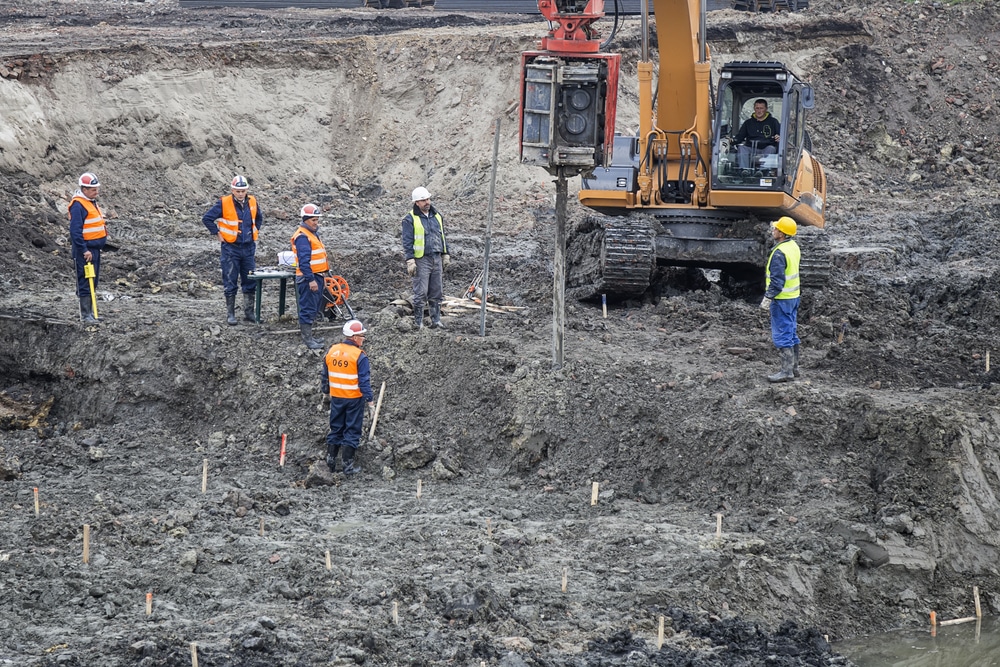A Detailed Exam of the Providers Supplied by Consulting Engineers in the Field of Geotechnical Engineering: From Website Investigation to Task Execution
Consulting engineers in geotechnical design play a pivotal function in the effective execution of construction jobs, beginning with detailed website examinations that disclose essential subsurface conditions. Their competence expands to dirt property assessments, environmental impact evaluations, and the careful tracking of task execution, making sure placement with security and sustainability requirements.
Value of Geotechnical Engineering
Geotechnical engineering is a critical discipline that underpins the security and sustainability of civil framework jobs. By comprehending the mechanical habits of soil and rock products, geotechnical designers evaluate the viability of sites for various constructions, consisting of structures, bridges, and dams. This fundamental analysis makes certain that structures can stand up to ecological aspects and tons without experiencing failing.
The relevance of geotechnical engineering extends past plain architectural security; it also incorporates environmental stewardship. Correct geotechnical evaluations contribute to minimizing the eco-friendly impact of building. Through careful examination of soil buildings and groundwater problems, designers can create foundations and retaining structures that minimize threats such as erosion and landslides, advertising long-term security.
Furthermore, geotechnical design plays an important duty in task expense monitoring. geotechnical works. By determining possible issues early in the layout phase, engineers can advise proper services, hence avoiding expensive hold-ups and redesigns during building and construction. This proactive technique not only enhances job efficiency however additionally considerably lowers risks linked with unforeseen website problems
Site Examination Methods
Effective site examination strategies are essential for collecting exact information about subsurface conditions prior to building and construction. These techniques help with the understanding of the geological and hydrological atmosphere, which is important for ensuring the stability and security of suggested frameworks.
Typical approaches used in website investigations consist of borehole boring, which permits designers to remove dirt examples at numerous midsts, providing understandings right into stratification and material types. Additionally, geophysical studies, such as seismic refraction and electrical resistivity, offer non-invasive ways to examine subsurface attributes over larger areas. These methods can help identify abnormalities without extensive excavation.
Examination pits are an additional beneficial strategy, offering direct observation of dirt layers and making it possible for in-situ screening. geotechnical works. This technique is especially beneficial for shallow excavations and can help evaluate groundwater levels. Cone infiltration examinations (CPT) are increasingly utilized, as they give constant profiles of soil resistance, which aids in establishing dirt stamina and layering.
Each of these techniques plays an essential function in creating a detailed understanding of site problems, allowing consulting engineers to make enlightened decisions and recommendations throughout the task lifecycle. Exact data collection throughout the website investigation stage is critical to mitigating threats and making sure successful job application.
Soil Home Assessment

The evaluation procedure typically includes a combination of lab examinations and area examinations. Key residential properties such as shear toughness, compressibility, leaks in the structure, and moisture content are assessed to figure out the dirt's viability for building and blog here construction objectives. Basic tests, including the Atterberg limits, Proctor compaction, and triaxial shear tests, are frequently utilized to collect data on soil habits.
Along with these examinations, in-situ methods such as the Requirement Penetration Test (SPT) and Cone Penetration Examination (CPT) supply beneficial understandings right into dirt stratigraphy and thickness. The outcomes of these evaluations notify engineers about potential obstacles, such as dirt liquefaction or negotiation, enabling them to design proper mitigation methods.
Environmental Effect Assessment
Environmental impact analysis plays a crucial duty in the preparation and implementation of engineering tasks, specifically in geotechnical engineering. This process entails analyzing the prospective ecological effects of suggested jobs on dirt, water, air top quality, and surrounding communities. Consulting designers make use of different methodologies, consisting of site analyses, modeling, and area research studies, to identify and evaluate these effects.
The evaluation commonly begins with the identification of standard environmental problems, which works as a referral for anticipating potential modifications. Engineers assess variables such as erosion, groundwater contamination, and environment disturbance, making sure that all pertinent ecological regulations and guidelines are followed throughout the job lifecycle. Stakeholder interaction is also an important part of the examination process, as it promotes interaction in between project programmers, local neighborhoods, and governing bodies.
Additionally, reduction strategies are established to resolve identified influences, permitting designers to propose alternatives or modifications to predict layouts that enhance sustainability. This aggressive method not only minimizes unfavorable effects on the environment however likewise promotes public trust and compliance with environmental regulations. Eventually, reliable ecological impact assessment enhances the general stability and stability of geotechnical design projects, supporting responsible development methods.
Job Application and Tracking

Monitoring is an essential part of project execution. Engineers make use of different strategies, such navigate to these guys as instrumentation and area tests, to analyze soil actions and structural feedbacks in real-time. This constant surveillance enables the recognition of any variances from anticipated performance, permitting for timely interventions to minimize dangers.
In addition, seeking advice from engineers preserve open interaction with professionals and stakeholders throughout the process. Normal website assessments and report card make certain that all parties are notified concerning project standing and any kind of arising worries. By cultivating collaboration and transparency, getting in touch with engineers help with a more efficient application process, therefore enhancing project outcomes.
Inevitably, efficient task implementation and monitoring not only maintain safety and security and top quality standards but likewise add to the total success of geotechnical tasks, guaranteeing they meet their intended purposes sustainably and responsibly.

Final Thought
In verdict, the role of getting in touch with engineers in geotechnical design includes a critical series of solutions that make sure task success. Eventually, the multifaceted contributions of getting in touch with engineers are crucial in attending to the complexities of geotechnical difficulties in modern-day engineering jobs.